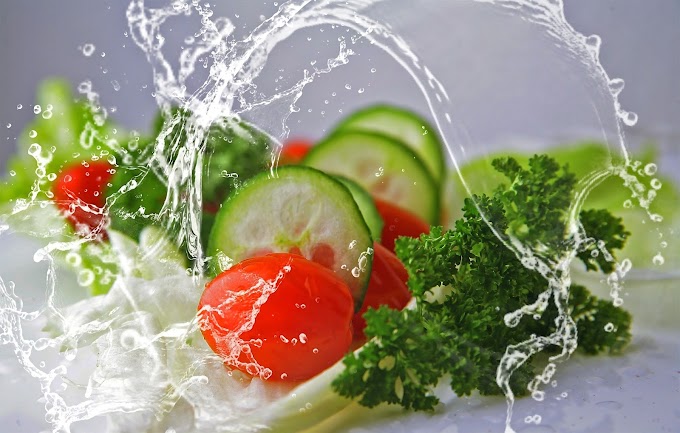 |
| Components of Cell: Cytoplasm, Organelles, and cellular components |
Components of Cell: Cytoplasm, Organelles, and cellular components
There are three main Components of Cell: Cytoplasm, Organelles, and cellular components. The cytoplasm is a liquid inside the cell that surrounds the organelles of the cell. The cell is surrounded by a cell membrane and controls the movement of substances entering or leaving the cell.
Many of the cell functions that are performed in the cytoplasmic compartment result from the activity of specific structures called organelles. This article summarizes the structure and function of these organelles.
- Cytoplasm
The cytoplasm of a cell has two distinct parts:
1. The cytomembrane system consists of well defined structures, such as the endoplasmic reticulum, Golgi apparatus, vacuoles, and vesicles.
2. The fluid cytosol suspends the structures of the cytomembrane system and contains various dissolved molecules.
- Ribosomes: Protein Workbenches
Ribosomes are non-membrane-bound structures that are the sites for protein synthesis. They contain almost equal amounts of protein and a special kind of ribonucleic acid called ribosomal RNA. Some ribosomes attach to the endoplasmic reticulum, and some float freely in the cytoplasm. Whether ribosomes are free or attached, they usually cluster in groups connected by a strand of another kind of ribonucleic acid called messenger RNA. These clusters are called polyribosomes or polysomes.
- Endoplasmic Reticulum: Production and storage
The endoplasmic reticulum (ER) is a complex, membrane-bound labyrinth of flattened sheets, sacs, and tubules that branch and spread throughout the cytoplasm. The endoplasmic reticulum is continuous from the nuclear envelope to the plasma membrane and is a series of channels that helps various materials circulate throughout the cytoplasm. It is also a storage unit for enzymes and other proteins and a point of attachment for ribosomes.
The endoplasmic reticulum with attached ribosomes is rough endoplasmic reticulum, and the endoplasmic reticulum without attached ribosomes is called the smooth endoplasmic reticulum.
- Golgi Apparatus: Packaging, sorting, and export
The Golgi apparatus or complex (named for Camillo Golgi, who discovered it in 1898) is a collection of membranes associated physically and functionally with their endoplasmic reticulum in the cytoplasm. It is composed of flattened stacks of membrane-bound cisternae (sing. cisterna; closed spaces serving as fluid reservoirs). The Golgi apparatus sorts, packages, and secretes proteins and lipids.
- Lysosomes: Digestion and degradation
- Mitochondria: Power generators
- Cytoskeleton: Microtubules, intermediate filaments, and microfilaments
3. Microfilaments are solid strings of protein (actin) molecules. Actin microfilaments are most highly developed in muscle cells as myofibrils, which help muscle cells to shorten or contract. Actin microfilaments in non muscle cells provide mechanical support for various cellular structures and help form contractile systems responsible for some cellular movements (e.g., amoeboid movement in some protozoa).
- Cilia and Flagella: Movement
- Centrioles and microtubule: Organizing centers
The specialized membranous regions of the cytoplasm near the nucleus are microtubule-organizing centers. These centers of dense material give rise to a large number of microtubules with different functions in the cytoskeleton. For example, one type of center gives rise to the centrioles that lie at right angles to each other. Each centriole is composed of nine triplet micro-tubules that radiate from the center like the spokes of a wheel. The centrioles are duplicated preceding cell division, are involved with chromosome movement, and help organize the cytoskeleton.- Vacuole: Cell maintenance
Vacuoles are membranous sacs that are part of the cytomembrane system. Vacuoles occur in different shapes and sizes and have various functions. For example, some single-celled organisms (e.g., protozoa) and sponges have contractile vacuoles that collect water and pump it ti the outside to maintain the organism's internal environment. Other protozoa and sponges have vacuoles for storing food.- The Nucleus: Information center
The nucleus contains the DNA and is the control and information center of the eukaryotic cell. It has two major functions. The nucleus directs chemical reactions in cells by transcribing genetic information from DNA to RNA, which translates this specific information into proteins (e.g., enzymes) that determine the cell's specific activities. The nucleus also stores genetic information and transfers it during cell division from one cell to next, and from one generation to the next.Nuclear envelope: Gateway to the Nucleus
The Nuclear envelope is a membrane that separates the nucleus from the cytoplasm that is continuous with the endoplasmic reticulum at a number of points. Over three thousand nuclear pores penetrate the surface of the nuclear envelope. These pores allow materials to enter and leave the nucleus, and give the nucleus direct contact with the endoplasmic reticulum. Nuclear pores are not simply holes in the nuclear envelope; each is composed of an ordered array of globular and filamentous granules, probably proteins. These granules form the nuclear pore complex, which governs the transport of molecules into and out of the nucleus. The size of the pores prevents DNA from leaving the nucleus but permits RNA to be moved out.
Chromosomes: genetic containers
The nucleoplasm is the inner mass of the nucleus. In a nondividing cell, it contains genetic material called chromatin. Chromatin consists of a combination of DNA and protein and is the uncoiled, tangled mass of chromosomes ("colored bodies") containing the hereditary information in segments of DNA called genes. During cell division, each chromosome coils tightly, which makes the chromosome visible when viewed through a light microscope.
Nucleolus: Preassembly Point for Ribosomes
The nucleolus is a non-membrane-bound structure in the nucleoplasm that is present in non-dividing cells. Two or three nucleoli for in most cells, but some cells (e.g., amphibian eggs) have thousands. Nucleoli are preassembly points for ribosomes and usually contain proteins and RNA in many stages of synthesis and assembly. The assembly of ribosomes is completed after they leave the nucleus through the pores of the nuclear envelope.







If you have any doubt, let me know.